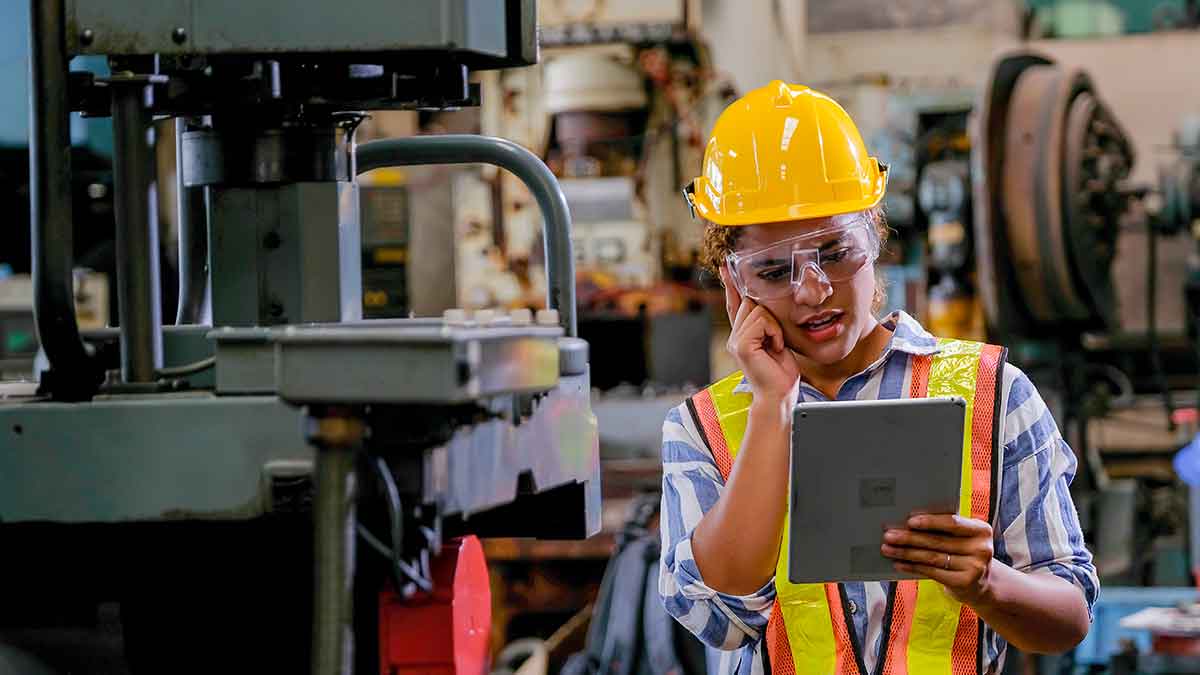Since the ’80s, there has been automation that has gradually digitized on the factory floor, and with the appearance of industry 4.0, adapting the manufacturing process to the real world is one of the purposes of the internet of things (IoT).
Global manufacturers are expected to use embedded data from embedded devices for analytic purposes. This will allow them to optimize their manufacturing and supply-chain processes on the factory floor. Operations by 2021 According to IDC (international data corporation), it is a staggering 9%.
Machine-to-machine (M2M) networks are established to communicate with their own language, basic commands from one machine to the other. This operation allows connecting with other systems or processes such as:
- Order accomplishment
- Material specifications
- Machinery status
Manufacturers should invest in IoT technology if they have not done it yet already, as they have a perpetual mandate to reduce costs, operate more efficiently and gain greater visibility into their processes and minimize supply chain risk.
IoT has many advantages that can transform your business and make you stand out from your competitors. While there are always risks, they can be managed carefully.
However, let’s first look at what the IoT can do for your manufacturing floor.
Simplify operations and increase visibility
Smart sensors allow businesses to monitor their strong points and all stages of the supply chain and then report this information automatically to a central database.
Some basic steps to improve manufacturing plants by starting the process with IoT:
- Automate wherever possible
- Install high-speed Internet service
- Include smart devices
- Connect between the factory floor and the office
- Establish real-time data reporting whenever possible
The main goal is to finally connect your factory floor and your products into a supply chain that is in constant evolution towards digital automation. This appliance can simplify and increase the visibility of your business into the market, for industries, customers, and vendors.
Predictive maintenance capabilities can mitigate disruptions
IoT technology can also help manufacturers eliminate costly service inspections that are susceptible to errors. Smart sensors, for example, can detect problems and prevent them from becoming more serious by providing real-time analytics about a machine’s performance.
Manufacturers can use this data from the machines, such as vibration and current, to perform predictive maintenance. This reduces disruptions and increases its production. It also mitigates the risk for missed deadlines, increased production costs, and reputational damage.
Since small and inexpensive computing hardware exists, such as wireless radios and sensors, you can wirelessly monitor the status of any machine and instantly transmit data.
Best practices in this situation call for the integration of a wireless connectivity module, such as:
- Cellphones
- Wifi
- Smart devices or sensors
These modules receive information and sent it to a cloud or machine where it can be monitor by human beings. As a result, the factory floor can:
- Improve data management and precise information about each machine’s status, which allows for better decision-making regarding labor, sales, or the supply chain.
- Improve visibility
- Increase asset utilization and lower maintenance
- Reduce energy consumption by identifying parts and devices that are not performing well.
How to start your IoT journey
There are many risks involved in implementing new technologies or systems. That is to say, you do not need to have a problem to have a solution or a more prominent work rate. This is especially true for IoT solutions on the factory floor.
There are four things you should know before you start your project.
- Remote monitoring of the supply chain is a way to optimize fleet operations.
- Real data allows monitoring, tracking, and analyzing any process.
- Asset tracking starting at the supplier and ending at the production line.
- Based on utilization rate tracking, automatic fulfillment.
Find a small project that can generate a short-term return and give you insights on how to improve on it with IoT. After that, you can think of larger projects by using the lessons from the first project to determine how to get additional resources and organizational commitment. You will eventually be able to forecast your storage and network needs for a production-sized distribution.
By installing these functions are, the factory floor remains competitive, not only with the higher and more accurate output, but with the ability to interact within machines, devices, and manufacturing processes.
If you want to learn more about IoT and its benefits on a factory floor, contact us!





